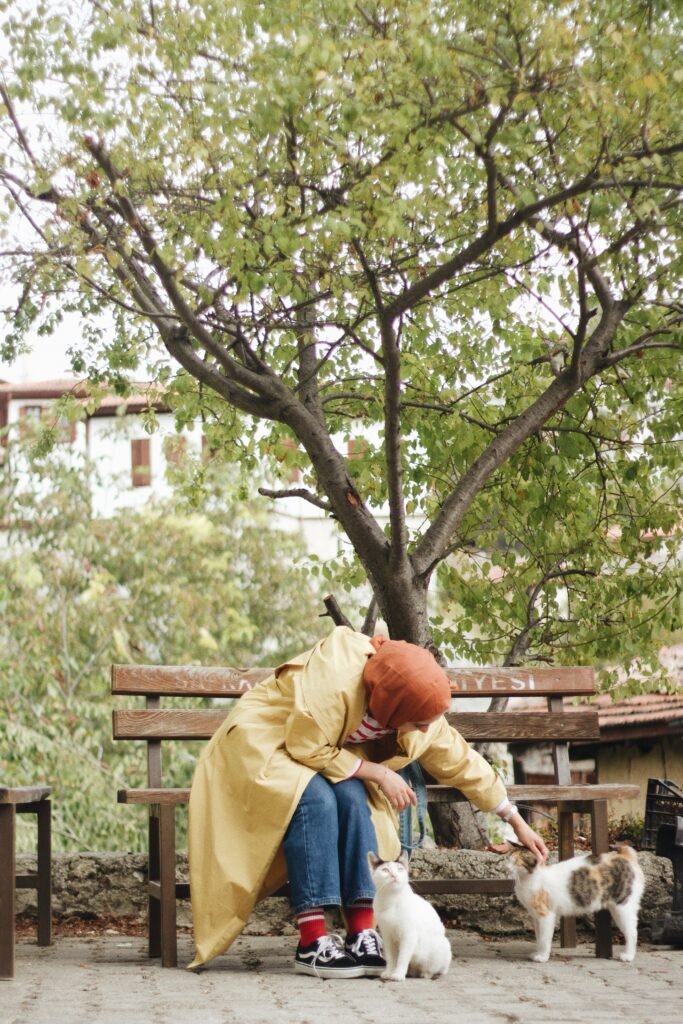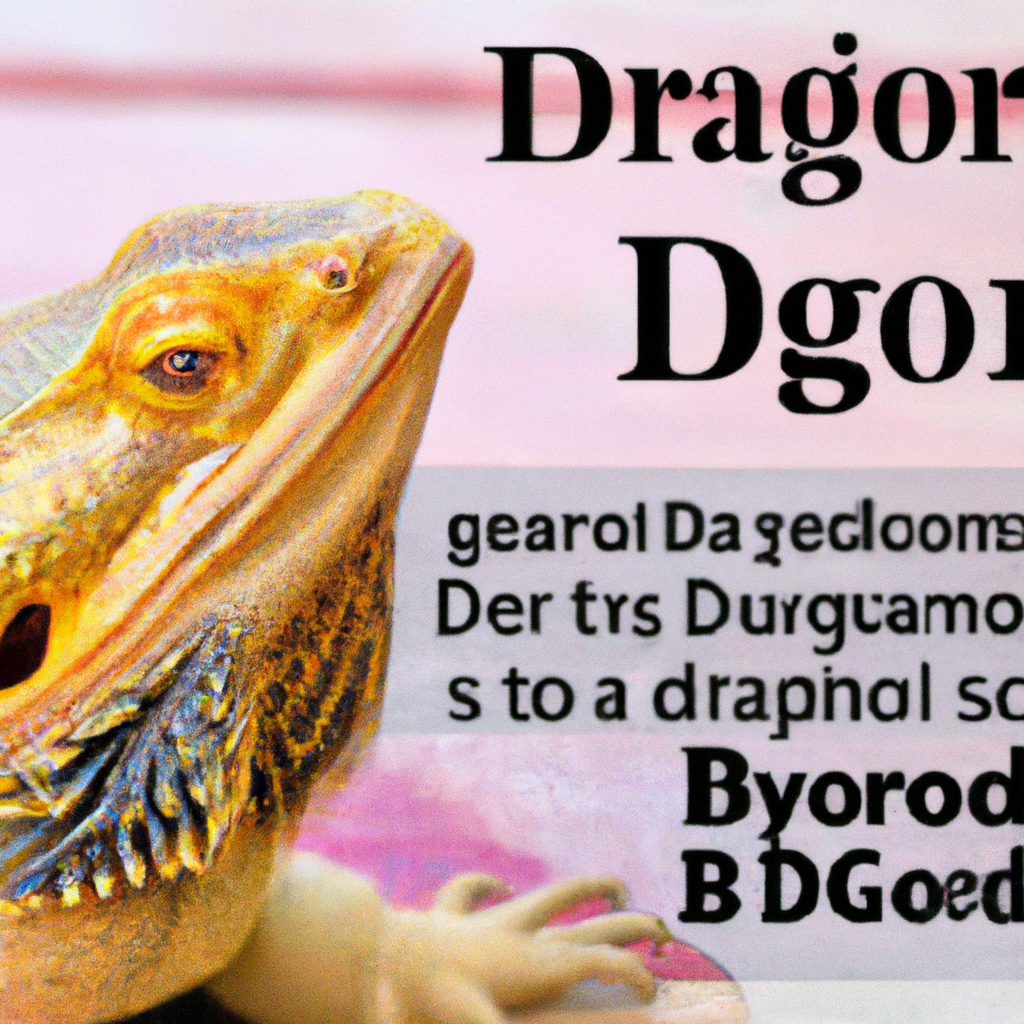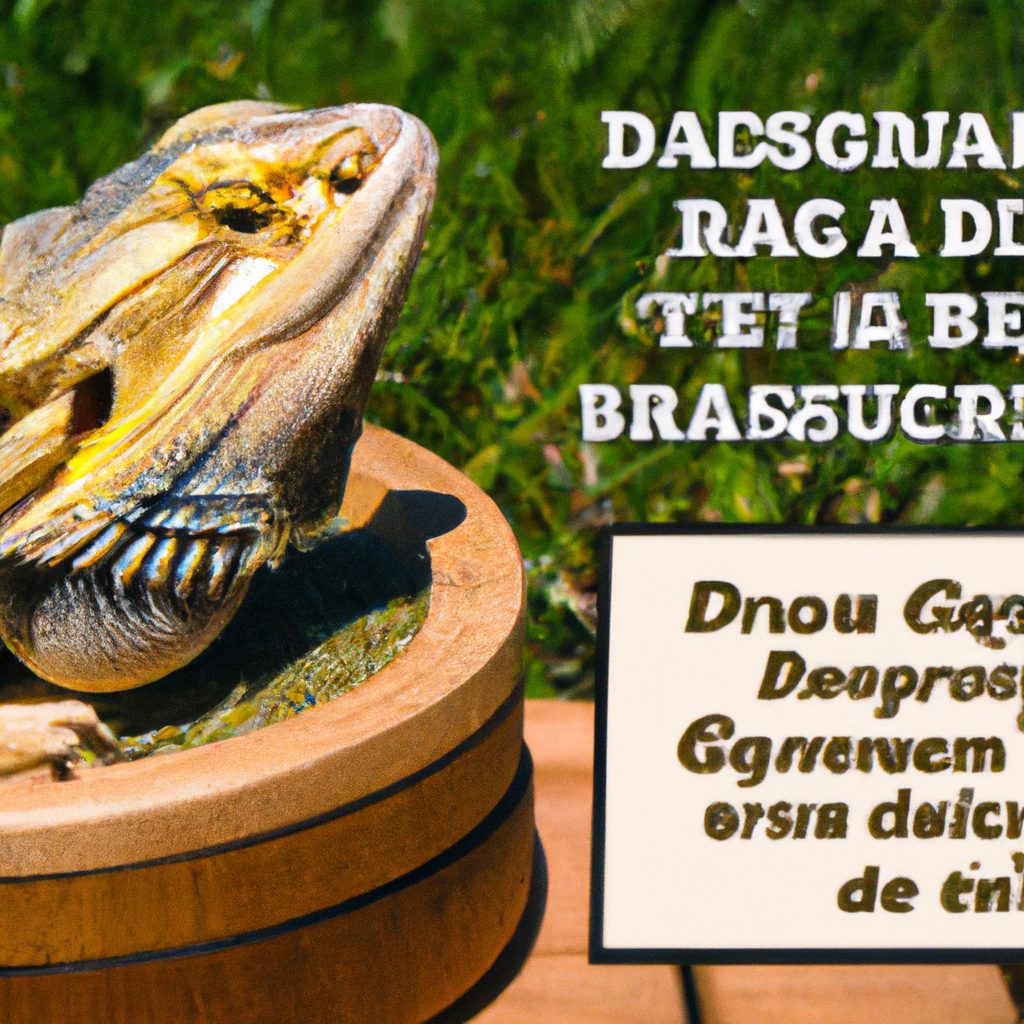So, you’re considering getting a Bearded Dragon as a pet? Well, you’re in for a fascinating and rewarding experience! With its unique appearance and docile nature, the Bearded Dragon has become increasingly popular among reptile enthusiasts. In this article, we will take a closer look at the charm and care of these incredible creatures, exploring their captivating behavior, habitat requirements, and overall well-being. Get ready to embark on a wonderful journey as a proud owner of a Bearded Dragon!

General Information
Appearance
The bearded dragon is a unique and fascinating reptile that makes a wonderful pet. It gets its name from the spiky beard around its throat, which it can puff up to look larger and more intimidating when it feels threatened or wants to display dominance. These lizards have a stout body, covered in rough scales, and can grow up to 24 inches in length. They come in a variety of colors, including shades of brown, orange, and yellow. Their appearance, combined with their friendly demeanor, makes them a popular choice for reptile enthusiasts.
Origin
The bearded dragon, also known as Pogona, is native to the arid regions of Australia. They inhabit a wide range of habitats, from deserts to woodlands, and are well adapted to a dry and hot climate. Due to their popularity as pets, they have been bred in captivity for many years, with various morphs and color patterns available in the pet trade.
Lifespan
With proper care and a suitable environment, bearded dragons can live for 10 to 15 years on average. Some individuals have been known to live even longer, with some reaching 20 years of age. The overall lifespan of your bearded dragon will depend on various factors, including genetics, diet, housing conditions, and healthcare.
Behavior
Bearded dragons are known for their docile and friendly nature, making them excellent pets for both beginners and experienced reptile keepers. They have a curious and intelligent personality and can become quite tame with regular handling and interaction. These lizards are diurnal, meaning they are most active during the day and spend their nights sleeping. They enjoy basking under heat lamps and exploring their surroundings. Bearded dragons are generally not aggressive, but like all animals, they should be treated with respect and care.
Housing and Enclosure
Terrarium Setup
Providing a suitable habitat for your bearded dragon is essential to its well-being. A glass terrarium is recommended as it provides a secure and easily maintainable environment. The size of the enclosure should be large enough to allow your dragon to move around comfortably. For an adult dragon, a 40-gallon tank is generally sufficient. However, as they grow, larger enclosures will be necessary.
Temperature and Lighting
Bearded dragons are ectothermic, meaning they rely on external heat sources to regulate their body temperature. It is crucial to provide a temperature gradient within the enclosure. One side of the tank should have a basking spot with a temperature of around 100°F (37°C), mimicking the heat they would experience in their natural habitat. The other side of the enclosure should be cooler, around 80°F (27°C), allowing for thermoregulation. To achieve this, a combination of basking lamps, ceramic heat emitters, and UVB lighting is recommended.
Substrate
Choosing the right substrate is important to ensure the health and safety of your bearded dragon. Avoid loose substrates such as sand or wood chips, as they can pose a risk of impaction if ingested. Reptile carpet or non-adhesive shelf liner are popular options, as they are easy to clean and do not pose a risk of ingestion. Additionally, providing a few flat rocks or tiles within the enclosure will allow your dragon to naturally wear down its claws.
Decorations
To create a stimulating and enriching environment for your bearded dragon, include a variety of decorations in the enclosure. A combination of rocks, branches, and artificial plants can provide both climbing opportunities and places to hide. Creating different levels and textures within the tank will help mimic their natural habitat and provide mental stimulation for your pet. Avoid using any decorations with sharp edges or small parts that can be swallowed.

Feeding and Nutrition
Diet
Bearded dragons are omnivorous and have a varied diet in the wild. As pets, it is important to provide a balanced diet that includes both animal-based and plant-based foods. The staple of their diet should consist of insects such as crickets, mealworms, and dubia roaches. Additionally, offer a variety of leafy greens and vegetables such as collard greens, mustard greens, and squash. It is crucial to provide a diverse diet to ensure all nutritional requirements are met.
Supplements
To ensure proper calcium metabolism, it is important to provide your bearded dragon with a calcium supplement. A calcium powder with vitamin D3 can be lightly dusted on insects before feeding. This supplementation helps prevent metabolic bone disease, which can be a common issue in reptiles. It is also recommended to provide a multivitamin supplement once or twice a week to ensure a well-rounded nutritional intake.
Feeding Schedule
Adult bearded dragons should be fed insects every other day, along with a variety of vegetables offered daily. Juveniles, on the other hand, should be fed insects daily and have access to vegetables throughout the day. It is important to monitor their eating habits and adjust the feeding schedule accordingly to prevent obesity or malnutrition. Always provide fresh water in a shallow dish, and ensure it is changed regularly.
Healthcare and Handling
Common Health Issues
Bearded dragons are generally hardy reptiles, but they can still be susceptible to certain health issues. Some common health problems include parasites, respiratory infections, shedding difficulties, and metabolic bone disease. Regularly monitor your dragon for any signs of illness, such as loss of appetite, lethargy, discolored stools, or abnormal behavior. If you notice any concerning symptoms, consult a reptile veterinarian for proper diagnosis and treatment.
Veterinary Care
Routine veterinary care is crucial to keeping your bearded dragon healthy. Finding a reptile-experienced veterinarian is recommended, as they will have the expertise to provide proper care and diagnose any potential health issues. Regular check-ups and fecal examinations are important to ensure your pet’s well-being. It is also recommended to have your dragon’s nails trimmed by a professional to prevent them from becoming too long.
Handling
Bearded dragons can be easily handled and enjoy human interaction. However, it is important to approach them gently and avoid any sudden movements that may startle them. Support their body with both hands and allow them to feel secure while being held. Regular handling from a young age will help your dragon become accustomed to being touched and will strengthen the bond between you and your pet.

Breeding and Reproduction
Mating Behavior
Breeding bearded dragons can be a rewarding experience but requires careful planning and preparation. Before attempting to breed, ensure that both the male and female are in optimal health and have reached sexual maturity. Introduce the pair in a spacious enclosure, closely monitoring their behavior. The male will display specific courtship behaviors, including head bobbing, arm waving, and darkening of colorations. If successful, mating will occur, and the female will develop eggs to lay.
Incubation
Once the female has laid her eggs, they should be carefully collected and placed in an incubator set to the appropriate temperature and humidity. The specific requirements for incubation will depend on the species and should be thoroughly researched. Proper temperature and moisture levels are essential for successful egg development.
Caring for Hatchlings
Hatchlings require specific care to ensure their survival and healthy growth. They should be housed individually in a small enclosure with appropriate temperature and lighting. Offer appropriately-sized food items, such as small crickets or pinhead roaches, and ensure they have access to a shallow dish of water. Take extra care in monitoring their growth and appearance, as hatchlings can be more vulnerable to health issues.
Legal Considerations
Permits and Restrictions
Before acquiring a bearded dragon as a pet, it is important to research and understand any legal requirements or restrictions in your area. Some jurisdictions may require permits or have specific regulations regarding the ownership of reptiles. It is essential to comply with all local laws and regulations to ensure the well-being of your pet and avoid any legal issues.
Responsibilities as an Owner
Owning a bearded dragon comes with certain responsibilities. It is important to provide a suitable environment, proper nutrition, and regular veterinary care for your pet. Be prepared to dedicate time and effort to ensure their well-being. Additionally, educating yourself about their needs and behaviors will help ensure a happy and enriching life for your bearded dragon.

Choosing a Bearded Dragon
Choosing a Healthy Dragon
When selecting a bearded dragon, look for signs of good health and vitality. The eyes should be bright and clear, with no discharge. Check for a clean vent, as any signs of diarrhea or fecal matter stuck can indicate health issues. The skin should be free from visible parasites or lesions. It is also important to observe the dragon’s activity level and its willingness to eat.
Age and Size Considerations
Consider the age and size of the bearded dragon you are looking to acquire. Juvenile dragons require specific care and have different dietary requirements compared to adults. Consider your ability to provide the appropriate care for a growing dragon and ensure that you have the necessary space for their future enclosures, as they will require larger accommodations as they grow.
Where to Buy
When buying a bearded dragon, it is recommended to purchase from reputable breeders or reptile specialty stores. These sources often have a greater emphasis on the health and well-being of their animals. Avoid purchasing from pet stores that may not provide proper care or may have limited knowledge about the specific needs of bearded dragons. Research and ask for recommendations from experienced reptile keepers to find a reliable source.
Interacting with Your Bearded Dragon
Bonding with Your Pet
Building a strong bond with your bearded dragon is essential for a rewarding pet ownership experience. Spend regular quality time with your dragon and handle them gently and frequently. Talking to your pet in a soothing voice can also help establish trust. Be patient and provide positive reinforcement through treats and rewards. A well-bonded bearded dragon can become an affectionate and interactive companion.
Play and Enrichment Activities
Bearded dragons are curious creatures and can be stimulated through play and enrichment activities. Provide toys and items that encourage exploration and natural behaviors, such as climbing branches, tunnels, or puzzle feeders. Supervised time outside of the enclosure, in a secure and controlled environment, can also allow your dragon to experience new sights and textures, further enriching their environment.

Training and Enrichment
Basic Training Commands
Bearded dragons can be trained to respond to basic commands, which can enhance their interaction with you and their environment. Simple commands such as “come” or “stay” can be taught using positive reinforcement techniques. Utilize treats and rewards to encourage desired behaviors. Training sessions should be short and conducted in a stress-free environment.
Environmental Enrichment
Providing a stimulating and enriching environment is crucial for the overall well-being of your bearded dragon. In addition to the decorations and play activities mentioned earlier, consider introducing new elements and challenges periodically. This can include rearranging the enclosure, introducing novel scents or textures, or even creating an outdoor enclosure during suitable weather. Be observant of your dragon’s response to the changes and adjust as needed.
Conclusion
Owning a bearded dragon can be a truly rewarding experience. Their unique appearance, gentle nature, and playful personality make them popular choices for reptile enthusiasts. By providing a suitable habitat, a balanced diet, regular veterinary care, and plenty of interaction, you can ensure a long and happy life for your bearded dragon. Remember to research and educate yourself to fully meet the needs of your pet, and enjoy the journey of bonding and caring for your scaly friend.